This xBmt was completed by a member of The Brü Club in collaboration with Brülosophy as a part of The Brü Club xBmt Series. While members who choose to participate in this series generally take inspiration from Brülosophy, the bulk of design, writing, and editing is handled by members unless otherwise specified. Articles featured on Brulosophy.com are selected by The Brü Club leadership prior to being submitted for publication. Visit The Brü Club Facebook Group for more information on this series.
Author: Alex Shanks-Abel
Over the last few decades, homebrewers have been blessed to have lab quality yeast readily available. Yeast labs pride themselves in their quality control by testing microbiological purity and performing frequent sensory analyses. Dry yeast in particular has an impressive shelf life and stable viability that ensures predictable fermentations.
Kveik and similar farmhouse strains have renewed the consumer interest in home-drying yeast, as it has been practiced for many generations by traditional brewers of Norway and other such regions. One of the most common methods involves spreading yeast slurry on parchment paper then placing it in a warm oven for 24 hours. This DIY method is not nearly as robust as the drying process used by commercial yeast labs, which often rely on fluidized bed dryers.
In a recent monthly meeting for The Brü Club, guest speaker Brian Perkey from Lallemand spent time chatting with members about yeast health, during which he covered the rigorous drying process Lallemand employs. I’ve been interested in trying my hand at home-drying yeast and asked if there were any strains he would recommend. He suggested their popular Nottingham, a strain of English origin that’s known for its high performance, so I went with his recommendation. Curious of how my home-dried version would fare, I designed an xBmt see for myself!
| PURPOSE |
To evaluate the differences between a British Golden Ale fermented with fresh yeast and one fermented with the same yeast stain that was home-dried.
| METHODS |
For this xBmt, I designed a simple British Golden Ale recipe in hopes of allowing any differences between the beers to shine.
Notty Dog
Recipe Details
| Batch Size | Boil Time | IBU | SRM | Est. OG | Est. FG | ABV |
|---|---|---|---|---|---|---|
| 9 gal | 60 min | 25.6 | 4.3 SRM | 1.044 | 1.004 | 5.25 % |
| Actuals | 1.044 | 1.004 | 5.25 % | |||
Fermentables
| Name | Amount | % |
|---|---|---|
| Maris Otter | 14 lbs | 100 |
Hops
| Name | Amount | Time | Use | Form | Alpha % |
|---|---|---|---|---|---|
| Edelweiss Blend | 43 g | 60 min | First Wort | Pellet | 5.1 |
| Edelweiss Blend | 28 g | 10 min | Boil | Pellet | 5.1 |
| Edelweiss Blend | 28 g | 5 min | Boil | Pellet | 5.1 |
Yeast
| Name | Lab | Attenuation | Temperature |
|---|---|---|---|
| Nottingham Yeast - Fresh OR Home-Dried | LalBrew | 75% | 32°F - 32°F |
Notes
| Water Profile: Ca 58 | Mg2 0 | Na 0 | SO4 64 | Cl 55 |
Download
| Download this recipe's BeerXML file |
Many months prior to performing this xBmt, I made home-dried yeast by spreading a thin layer Nottingham slurry from a yeast starter on parchment paper and placing it in an 85°F/29°C oven. After 48 hours later, I crumbled the dry yeast into flakes and put them in a mason jar, which was stored in my refrigerator for a couple months before use.
I started my brew day by collecting the full volume of RO water that I adjusted to my desired profile before lighting the flame to get it heating up, at which point I weighed out and milled the grain.
When the water was properly heated, I incorporated the grains then checked to make sure the mash was at my target temperature.
Following the 60 minute mash rest, I removed the grains and boiled the wort for 60 minutes, adding hops at the times listed in the recipe.
When the boil was complete, I took a refractometer reading showing the wort was at my target OG.
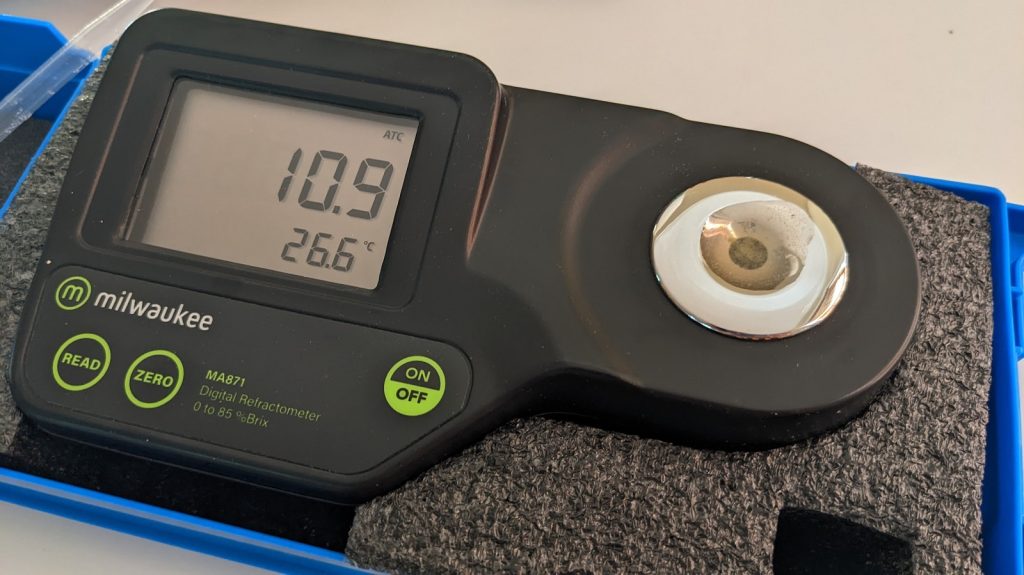
At this point, I split the wort evenly between separate sanitized fermentation kegs, which were placed in a water bath and allowed to chill overnight.
The next morning, I pitched identical amounts of home-dried and fresh yeast into either batch.
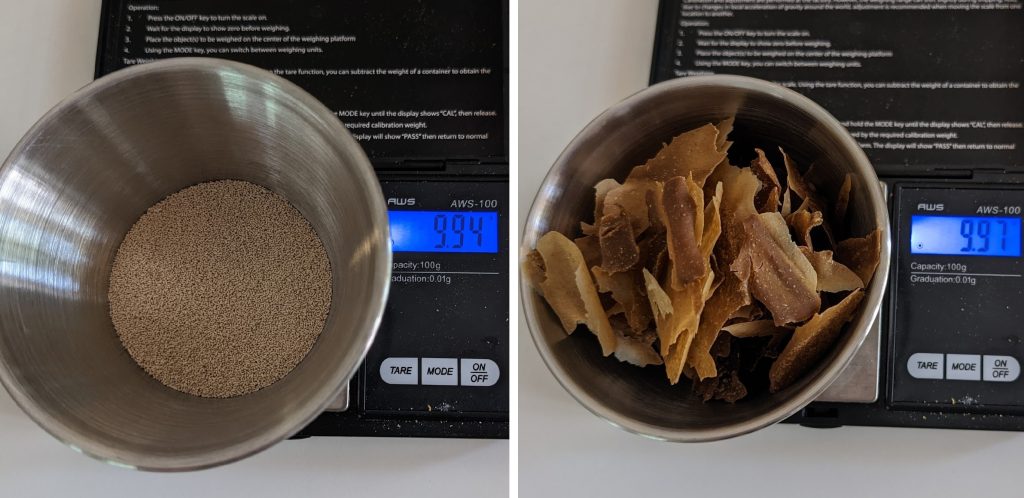
With fermentation activity absent a week later, I took hydrometer measurements showing the beers were at the same FG.
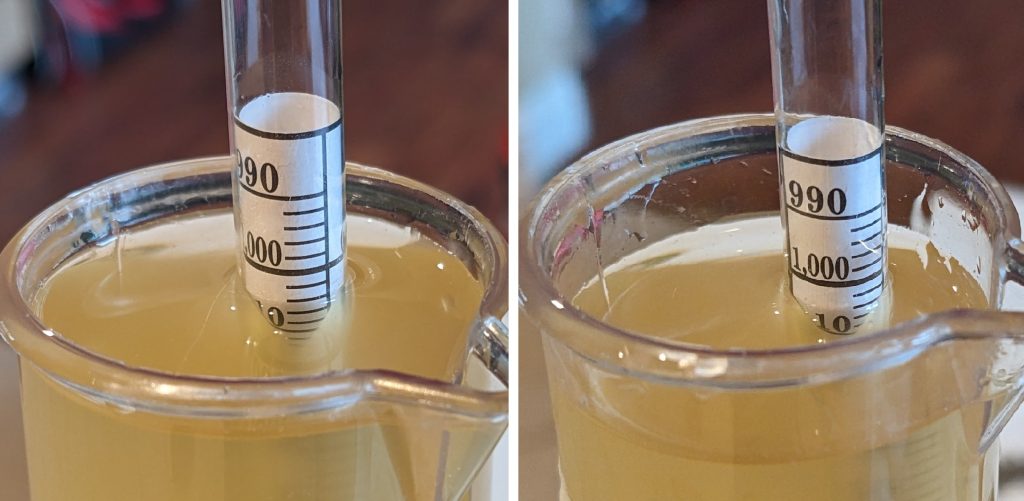
At this point, I pressure-transferred the beers to CO2 purged kegs.
The beers were then placed on gas and left alone for 3 weeks before they were carbonated, clear, and ready to serve to tasters.
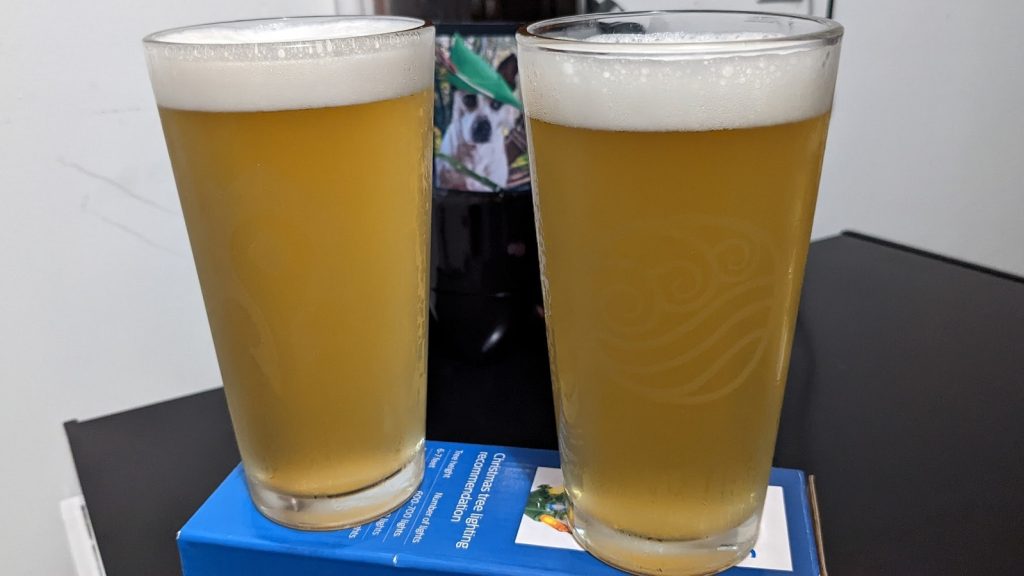
| RESULTS |
A total of 23 people of varying levels of experience participated in this xBmt. Each participant was served 1 sample of the beer made with fresh yeast and 2 samples of the beer made with home-dried yeast in different colored opaque cups then asked to identify the unique sample. While 12 tasters (p<0.05) would have had to accurately identify the unique sample in order to reach statistical significance, 11 did (p=0.11), indicating participants in this xBmt were unable to reliably distinguish a British Golden Ale fermented with fresh Nottingham yeast from one fermented with home-dried Nottingham yeast.
My Impressions: Out of the 5 semi-blind triangle tests I attempted, I correctly identified the odd-beer-out just twice. Despite knowing the variable, these beers tasted exactly the same to me– crisp and floral with a whisper of Maris Otter nuttiness.
| DISCUSSION |
Home-drying yeast is an easy and fun alternative to keeping jars of slurry in the refrigerator, and it may also extend the window of usability. This method isn’t nearly as rigorous as the one employed by commercial yeast labs, who often incorporate emulsifiers with yeast slurry before dehydrating the mixture in fluidized bed dryers. However, the fact tasters in this xBmt were unable to reliably distinguish a British Golden Ale fermented with fresh Nottingham yeast from one fermented with home-dried Nottingham yeast suggests it may be a viable option.
Limited research exists on the effects of small scale yeast drying yeast, though plenty of research has been done on drying yeast commercially and in a lab setting. While the process of fluidized bed drying is stressful enough to cause some cell death, the genetic constitution of dried yeast seems to be unaffected in such settings, at least for certain yeast strains.
My attempt at home-drying yeast was completely experimental in nature, to the point I expected the beer fermented with it to be a dumper, if it even fermented the beer at all. I was pleasantly surprised when fermentation kicked off not too long after the batch pitched with fresh yeast, and proceeded in a relatively normal manner. It’s worth noting that Nottingham is a yeast adapted to drying, albeit in a professional setting, and while I look forward to further experimentation with home-drying other strains, some may not respond as well.
 Alex Shanks-Abel is a certified shoddy brewer residing in Texas with their lovely spouse, a 3 1/2 legged mutt, and 22 banana plants. Upon receiving an extract kit on their 21st birthday, they discovered a new passion and have been obsessively brewing ever since. Alex geeks-out over the science of fermentation while trying to brew as unpretentiously (i.e. shoddy) as possible. When Alex isn’t brewing in bags, they’re DMing too many D&D games or publishing video game mods that nobody asked for.
Alex Shanks-Abel is a certified shoddy brewer residing in Texas with their lovely spouse, a 3 1/2 legged mutt, and 22 banana plants. Upon receiving an extract kit on their 21st birthday, they discovered a new passion and have been obsessively brewing ever since. Alex geeks-out over the science of fermentation while trying to brew as unpretentiously (i.e. shoddy) as possible. When Alex isn’t brewing in bags, they’re DMing too many D&D games or publishing video game mods that nobody asked for.
If you have any thoughts about this xBmt, please do not hesitate to share in the comments section below!
Support Brülosophy In Style!
All designs are available in various colors and sizes on Amazon!
Follow Brülosophy on:
FACEBOOK | TWITTER | INSTAGRAM
If you enjoy this stuff and feel compelled to support Brulosophy.com, please check out the Support page for details on how you can very easily do so. Thanks!



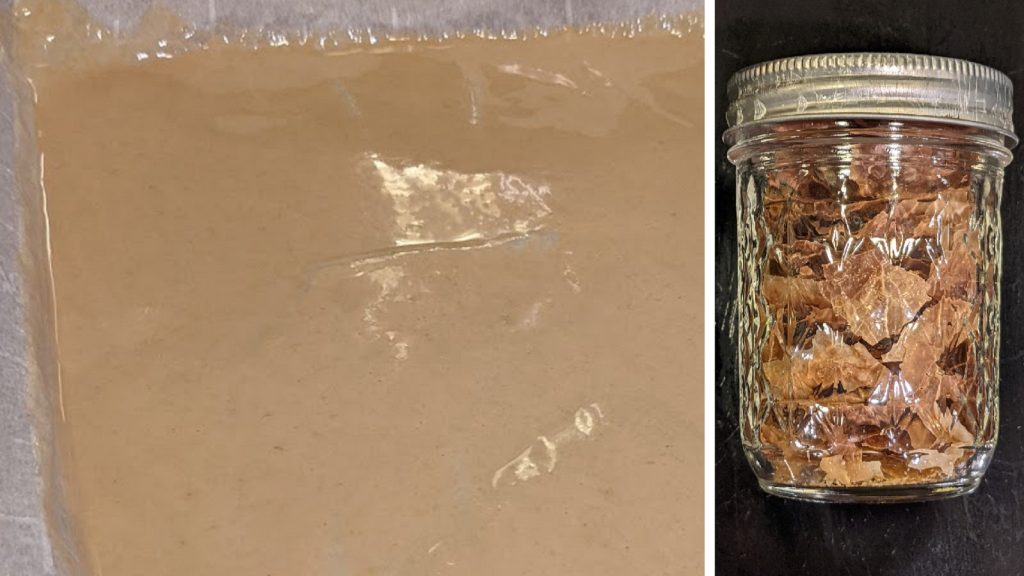
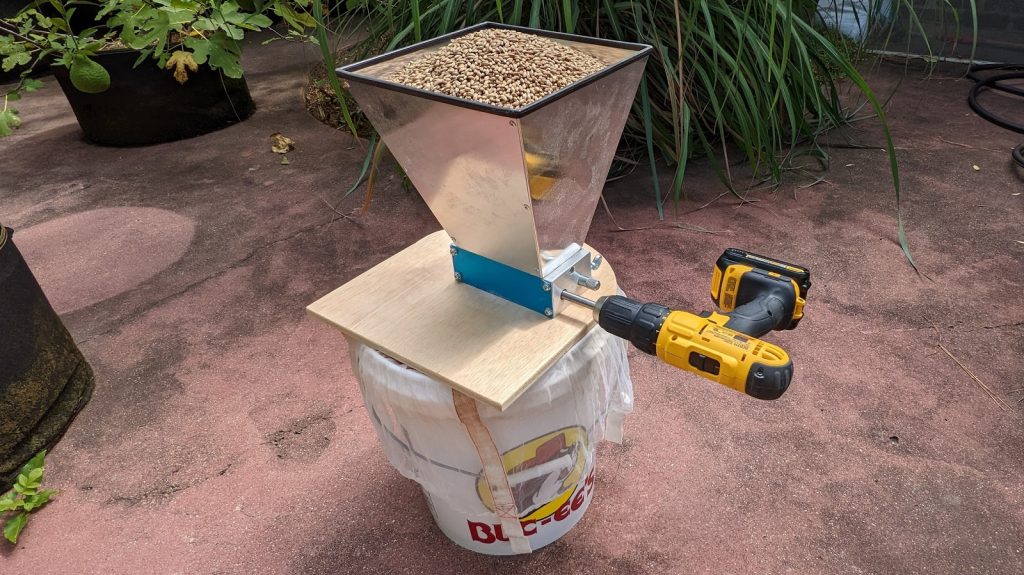
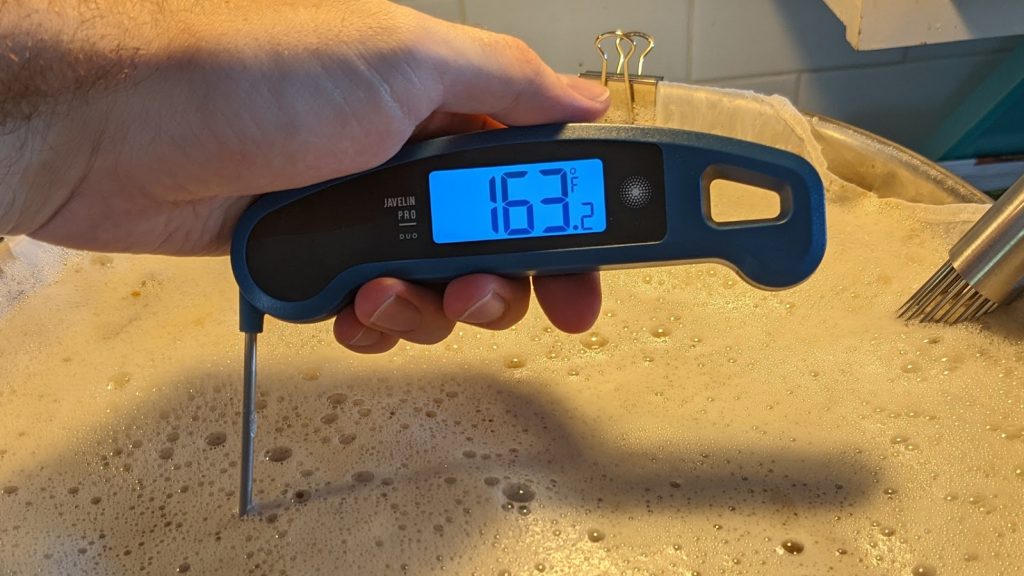
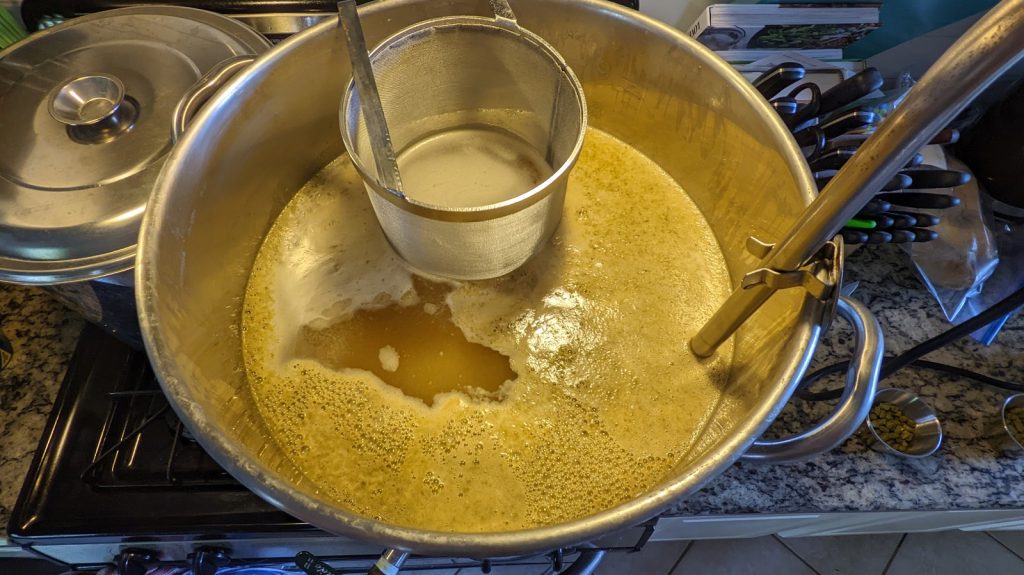
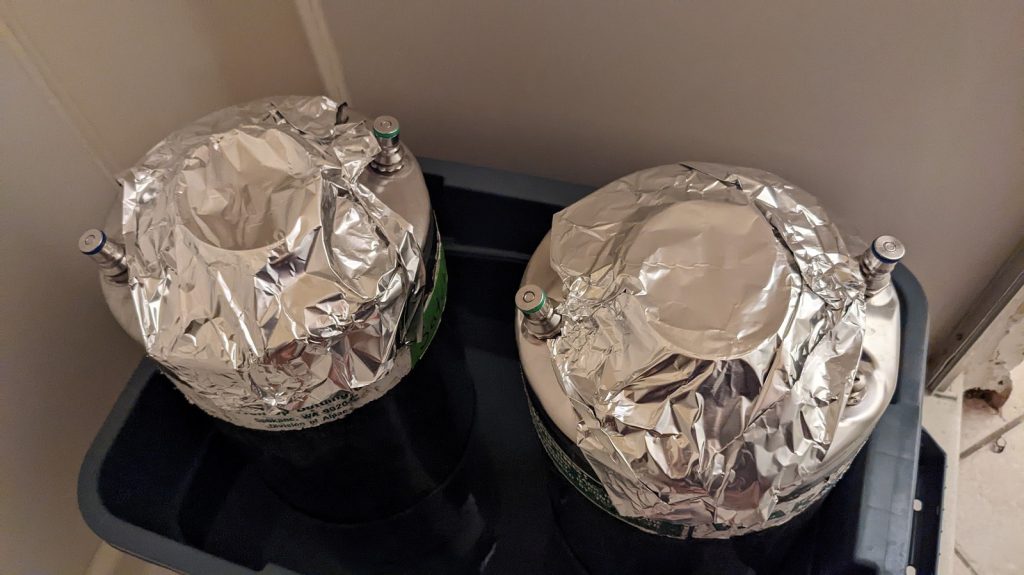
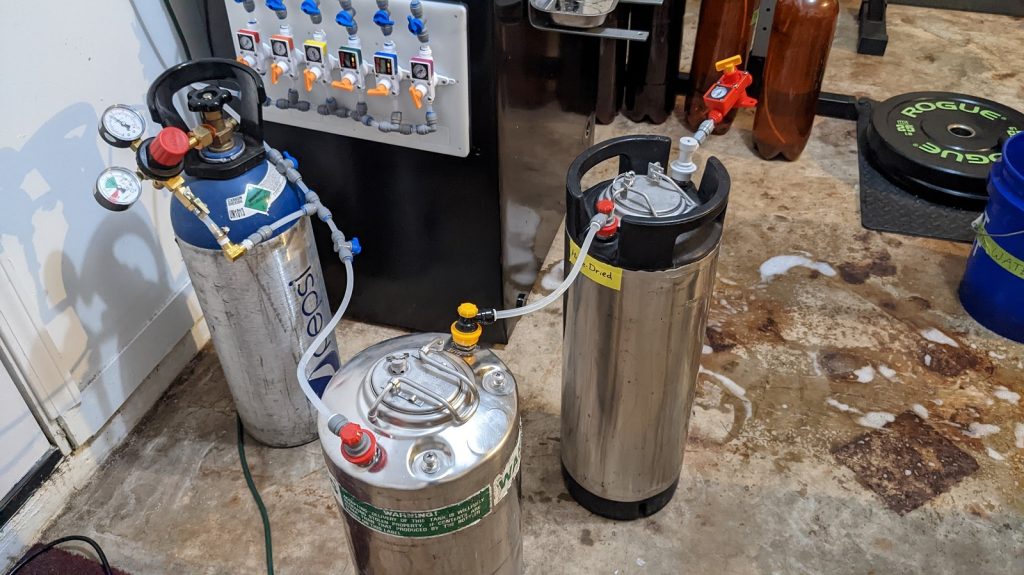












7 thoughts on “The Brü Club xBmt Series | Impact Fermenting With Home-Dried Yeast Has On A British Golden Ale”
Whoops! “opens”
I’m curious about the 163 degree mash temperature. Isn’t that outside the temperature range that is usually required for mash starch conversion? Interesting article, BTW, I dried some Kviek yeast slurry last year with a food dehydrator but never used it. I may have to now.
Very cool. I’m going to try this on some saison yeast.
Awesome! Are you going to use a liquid or dry strain?
Great idea for an experiment! Quick question:
You went from “The next morning, I pitched identical amounts of home-dried and fresh yeast into either batch.”
Right to “With fermentation activity absent a week later, I took hydrometer measurements showing the beers were at the same FG.”
I think people might be super curious about differences in fermentation, such as lag time, vigorousness, temperatures, krausen, etc. I know I definitely am. Although I suppose that since you fermented in kegs, you might not know some of these details. Do you have any other info you could share on the fermentation itself?
This is interesting, thanks. This got me searching, and these anecdotal accounts turned up.
https://www.thehomebrewforum.co.uk/threads/drying-yeast-at-home.83831/
I’d think it would make sense to run a proof after drying to test it — maybe rehydrate DME in a quart or two of water, boil with a few grams of hops, then ferment with a bit of dried yeast. If it tastes decent, it should be viable for a full batch.
This is super cool. Drying my own yeast has never occurred to me as even an option. Next time I brew with one of my usual liquid yeasts, I’ll have to make a starter with some reserved slurry and try drying it.